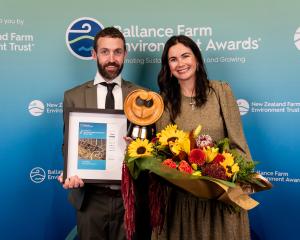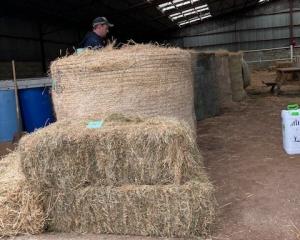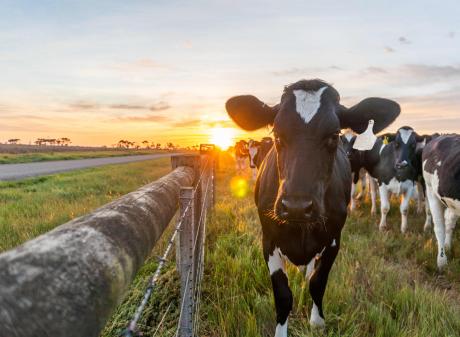
About 50 people attended Beef + Lamb New Zealand workshop "Trees Within Farms: Opportunities with Carbon in Southland" on Monday last week.
Orme & Associates managing director Phil Orme, of Timaru, facilitated the event because of his knowledge of the scheme and forestry on farm.
The event was held in Chris Affleck’s woolshed on his rolling 360ha sheep, beef, dairy grazing and forestry farm in North Chatton, about 20km north of Gore.
In his introduction, Mr Orme said the event focused on planting trees within an existing farm system rather than the blanket afforestation of it.
The aim of the event was to explain how the scheme works and if it presented an opportunity for farmers.
"I don’t care if another pine tree doesn’t get planted in New Zealand — it’s not my land, it’s not my choice — but there is a place for it."
Each farmer had a different situation, which would dictate how trees could work in their system.
The benefits of trees on farms included providing windbreaks and shade for livestock.
"Here’s a silly fact — the highest recorded temperature on the back of a black cow in New Zealand is between 50degC and 55degC."
Trees, such as poplars and willows, could be used as stock food during droughts or feed shortages.
Other benefits of trees include helping soil retention on steep slopes, improving the productivity of land and providing landscape diversity and wildlife habitat, absorbing carbon, diversifying income and reducing future greenhouse gas emission costs associated with a New Zealand pricing scheme.
Any forest in the scheme did not need to be fenced or have stock excluded from it, he said.
The scheme was separate from the He Waka Eke Noa partnership to reduce primary sector emissions.
Mr Orme wanted to debunk the myth a pine tree had a life-span of 30 years.
Pine trees in Hanmer Forest were planted in 1906 and continued to produce 20 tonnes of carbon a year, he said.
"They don’t look as pretty as when they were 30 — not many of us do — but it is still making a valuable contribution."
Opportunities of the scheme include being able to register indigenous reversion and larger riparian and dense poplar planting areas.
Carbon credits could be sold over time to improve cashflow.
The risks occur when a forest in a scheme is cut down, or if it burns down. Then the forest must be replanted or the contract is broken and all carbon credits allocated must be surrendered.
If the farmer had sold some carbon credits, then they must buy those units on the open market to be able to return their allocation to the Government.
"There is an opportunity, but you have to understand the risk involved."
The scheme was here to stay because it had cross-party support, as the urban community supported it and they accounted for 85% of the votes.
The Government had international obligations for climate change response targets in the next 30 years. Planting trees would not save the planet, but it would help New Zealand meet its international obligations, he said.
Farmers did not have to agree with the scheme, but they should understand it so they could decide if it could be of benefit to them.
A similar event was held in Callum Stammer’s woolshed in Circle Hill, near Milton, the next day.
Emissions Trading Scheme
The scheme is New Zealand’s primary policy tool for reducing greenhouse gas emissions.
If someone owns forest land or has rights in forest land, they might be able to enter the scheme and earn carbon credits.
To be eligible for the scheme, the forest must be established after 1989 and have:
- Tree species with a potential height taller than 5m.
- Less than 15m between potential canopy edge.
- A potential average width greater than 30m.
- A potential canopy cover greater than 30%.
- Any 1ha gaps removed.
SOURCE: BEEF + LAMB















